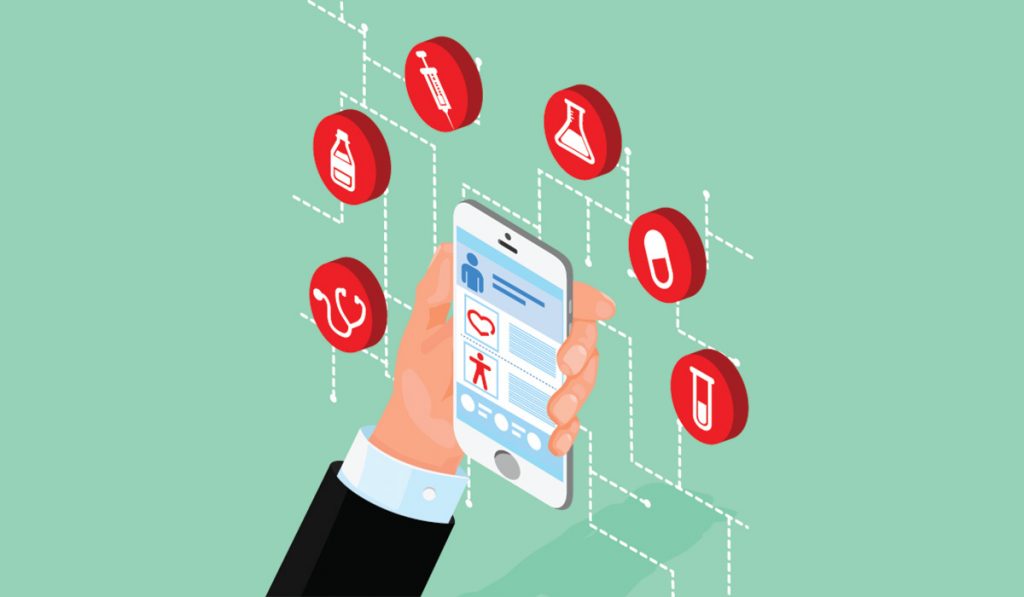 We see it in the news every day. The Arizona healthcare industry is facing major personnel shortfalls and is in a fierce competition to attract qualified talent. According to data from the U.S. Department of Health & Human Services, the State of Arizona ranked fifth in this struggle, with 30% of hospital reporting a staffing shortage.
We see it in the news every day. The Arizona healthcare industry is facing major personnel shortfalls and is in a fierce competition to attract qualified talent. According to data from the U.S. Department of Health & Human Services, the State of Arizona ranked fifth in this struggle, with 30% of hospital reporting a staffing shortage.
There is no easy solution to this problem; rather, weathering the storm requires flexibility and the willingness to adopt new trends that meet workers’ needs. One of these trends is incorporating mobile technology into a clinic’s operations. The use of mobile devices is mainstream, as evidenced by Pew Research’s finding that 97% of Americans own a cellphone of some kind. Yet, the healthcare industry’s adoption of mobile technology has lagged behind. The rise in telehealth and other digital transformation efforts have helped push the industry forward in mobile adoption, but multiple barriers continue to make the transition difficult.
One of the largest barriers is changing the mindset of healthcare employers. According to U.S. Census Bureau data, millennials are currently the largest generation in the U.S. workforce. Designing a place of employment to attract these workers that are almost constantly on cellphones in their personal lives requires a willingness to adapt to their behaviors. They want a career where they are able to incorporate digital tools such as mobile devices to ease their administrative burden and allow them to spend greater time on the more interesting aspects of their job.
Exasperated by the COVID-19 pandemic and an aging workforce, employee burnout in the healthcare industry is no small matter. Healthcare workers who are burned out are more likely to leave their jobs. They are also more likely to commit a medical error, and their fatigue may affect a patient’s healthcare experience.
Better leverage of mobile technologies is a fundamental part of developing a successful strategy for success and sustainability. Hybrid operations are becoming the norm, and health providers need to improve administration efficiency and workforce effectiveness by optimizing the use of their current platforms such as electronic health records (EHR), human resource information, financial management and telehealth. This involves ensuring these platforms are compatible and integrating their functions.
For example, accessing an EHR powered by artificial intelligence that can connect clinicians to their patients through real-time audio and video via a mobile device while simultaneously updating medical records results in a major boost in productivity. Market intelligence leader Open Minds states 40% of staff’s time (two days per week) is spent on clinical documentation, yet 15% to 45% of the documentation has missing or erroneous information. Documenting patient encounters and clinical plans quickly with voice recognition without a keyboard through a mobile device is a game changer.
Millennials aren’t the only ones comfortable using mobile devices in their everyday lives. According to Comscore, mobile surpassed desktop as the primary way to access the internet in 2018. By harnessing the power of EHR technology in a mobile device, patients can be encouraged to adopt preventive health behaviors by seamlessly linking to wearable devices so that patients can monitor vitals and track progress in their healthcare journey. It can also allow patients to view health records and lab results, sign documents, schedule appointments and request medication refills.
Connected clinicians, engaged patients and better health outcomes can all be achieved through the use of mobile technology in clinical settings. Realizing these benefits requires both a strategic plan and a robust integrated infrastructure. With the right platforms in place, healthcare organizations can deliver measurable results and deliver a return on investment by enabling more efficient care delivery and improving employee satisfaction.
 Khalid Al-Maskari is CEO of HiMS (Health Information Management Systems).
Khalid Al-Maskari is CEO of HiMS (Health Information Management Systems).
Did You Know: HiMS’s new AxiaGram mobile app aims to improve communication. According to The Joint Commission, ineffective communication is the root cause of 66% of medical errors. Market intelligence leader Open Minds states 40% of staff’s time (two days per week) is spent on clinical documentation, yet 15% – 45% of the documentation has missing or erroneous information.













Speak Your Mind
You must be logged in to post a comment.